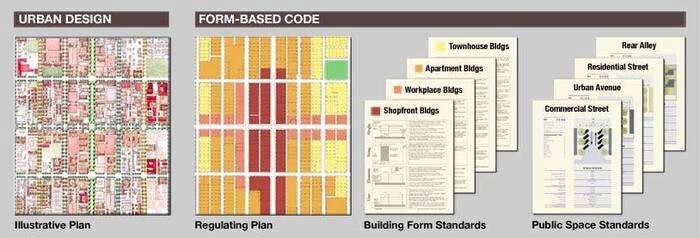With Foundamental we are investing under a clear thesis for the construction sector: we believe in autonomous supply chains in AEC. But autonomy does not begin when ground was broken and construction has started. In fact, we realized that to unlock full autonomy for our sector, we need to build autonomous pre-construction processes as well.
‘Never tell me ‘the sky is the limit’ when the zoning code imposes stricter limit.’
— Paul Brandt
It all starts with project developers, and how they source land and interpret local form-based code. We dug deep into this theme for the past several months, talked to the leading tech players in this space, and got excited by a handful of founders. We came to realize: the process of sourcing land and interpreting code is broken, big time. Those who fix the pre-construction will be in the position to integrate further into the construction phase, and help build supply chain autonomy there.
1/ Developers and architects are bound by form-based code, consisting mainly of building code and zoning code in all major economies and municipalities around the world.

2/ But: building code and zoning code is (A) highly specific to the city or even municipality, i.e. non-harmonized across regions or countries, and (B) documented in convoluted, unstructured and non-harmonized formats, eg. law texts in long-sentence formats as PDF or HTML.
3/ That means: building and zoning codes do not come in machine-interpretable form, nor are they written in standardized form across municipalities. Each municipality writes in their own way.
4/ Result today: when a developer identified parcels they would like to develop and build on — say for a new shopping center — they have to manually look up and interpret the local codes. Today’s process is:
Land identified >> code looked up >> architectural concept drawn >> compared to code again >> business case drawn >> offers made >> reply received >> back to architectural drawing board to make adjustments >> compared to code again >> etc etc …
The lack of automated code interpretation leads to a process with multiple iterations.
5/ Now comes the double-whammy: in many cases developers might own or have an option on one parcel, but actually need multiple adjacent parcels in order to develop their project (eg. said shopping center). This complication adds further dependencies across the above iterative process, as the architectural concept and the business case depend on the size of the project, and the parcels available to the developer. Practically: the developer needs to find the data on all parcels, identify the owners, calculate how much can be offered in order to make financial sense, and make the actual offers to the owners.
6/ Metrics in manual process: Our deal flow and research shows that it takes one employee in a good real estate development firm on average 7 manual work days to find data on one parcel and interpret the codes for that one parcel they are interested in. And: that same employee can successfully source on average 50 parcels for projects per year (i.e. what comes out at end of the funnel)
7/ Metrics in automated process: With tech companies that integrate and automate the identification of parcels and interpretation of local codes:
8/ Ergo: those productivity and speed increases are of immediate value. But: imagine what happens to the traditional manual method as code requirements for developers and architects increase further, especially driven by the carbon footprint of their projects.
9/ And: tech companies owning the automated sourcing of land and interpretation of code own the first project touchpoint. They form the earliest entry point to developers, architects, GCs and their newest projects.
10/ Ergo: we invest towards fully autonomous pre-construction. Imagine an AEC process in which the above tech companies automating building/zoning codes partner and integrate with auto-generated building designs (eg. Hypar), multi-parameter optimized project schedules (Alice) and integrated and transparent project financing/risks assessment (Rabbet, Reonomy, Credifi).
As always, credits go to the data wizards in our Foundamental Insights group.
Sources: